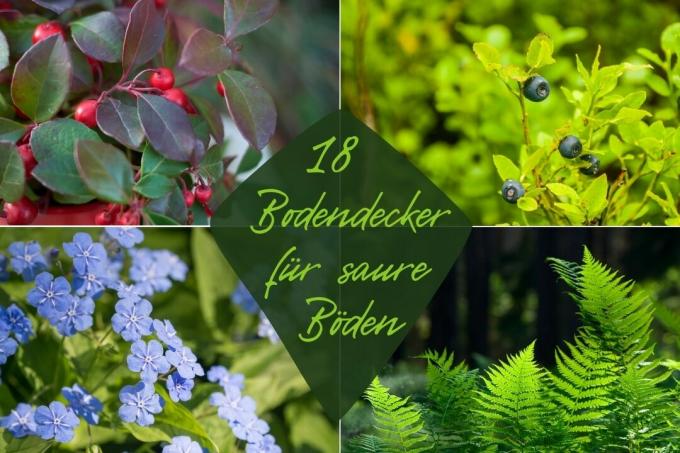
table of contents
- Types from A - I
- Types of J - K
- Types of L - S
- Types from T - Z
- frequently asked Questions
Shady places in the garden are usually a problem because not so many plants grow there. It becomes even more difficult if the soil is also acidic. A selection of suitable ground cover for shady places and acidic soils can be found here.
In a nutshell
- Shade plants grow in dark corners of the garden
- tolerate light, but not direct sun
- the lighter, the more moisture is required
- Soil can be acidified with bark mulch
Types from A - I
Wood anemone (Anemone nemorosa)

- Origin: native
- Location: shady to shady, loose, humus-rich, well-drained soil
- Growth height: 10 to 20 cm
- pH value: calcareous to slightly acidic soils
- Properties: slightly poisonous, retracts the leaves after flowering, does not form green ground cover all year round
- Flowers: spring, white-pink
- Care: easy to care for, do not chop, water and mulch if necessary
Dickman (Pachysandra terminalis)

- Origin: Japan, China
- Location: partially to shady, slightly moist soil
- Height: 15 to 30 cm
- pH value: neutral to slightly acidic
- Properties: evergreen, poisonous, subterranean runners, shoots lignify in the lower area, the leaves turn yellow when there is too much sun
- Flowering period: April to May, white, small
- Care: undemanding, water only when it is dry
Ferns
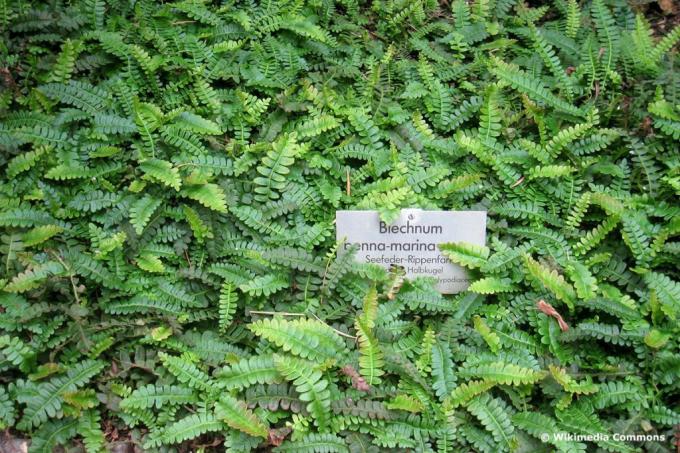
- Origin: local and worldwide
- Location: shady, sheltered from the wind, moist, well drained and loose soil
- Height: 30 to 75 cm
- pH value: alkaline to acidic
- Characteristics: Leaves form typical fern fronds, when young, no flowers or seeds form, form spores
- Care: mulch, keep moist, protect from direct sun
- Suitable species and varieties: peacock fern (Adiantum patum), oak fern (Gymnocarpium), rib fern (Blechnum), striped fern (Asplenium), spotted fern (Polypodium), ciliate fern (Woodsia)
Spring Memorial (Omphalodes Verna)
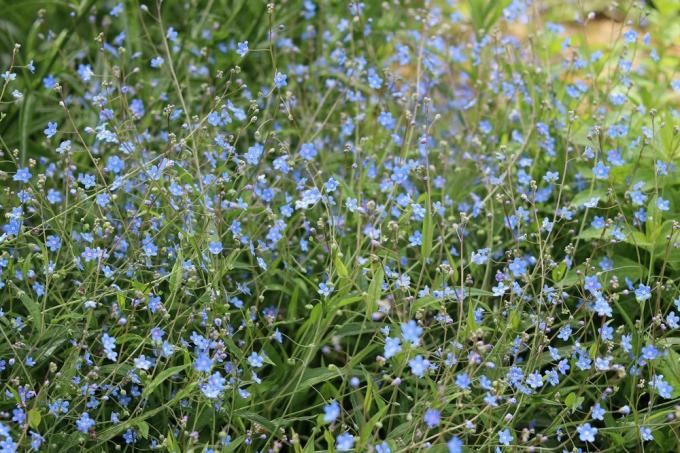
- Origin: Southern Europe
- Location: semi-shady to shady, not too dry, well-drained, nutrient-rich soil
- Growth height: 10 to 20 cm
- pH value: neutral to slightly acidic soils
- Properties: forms runners and dense carpets of leaves
- Flowers: April and May, blue, honor-like or forget-me-not-like flowers
- Care: easy to care for and robust
Note: Gedenkemein can easily be divided as ground cover and replanted in acidic soils.
Types of J - K
Japan sedge (Carex morrowii)

- Origin: Japan
- Location: semi-shady to shady, moist, sheltered from the wind, nutrient-rich soil
- Growth height: 30 to 40 cm in height
- pH value: neutral to slightly acidic
- Properties: host-forming grass, green or green-white striped, evergreen
- Flowering: April or June, forms inconspicuous spikes
- Care: water when it is dry, fertilize in spring, propagation by division
Cashmere bergenia (Bergenia ciliata)

- Origin: East Asia
- Location: shady, moist, cool
- Height: 5 to 30 cm
- pH value: alkaline to slightly acidic soils
- Properties: hardy, large leaves, forming rosettes, multiplication by division
- Flower: spring, pink, red or purple
- Care: supply with compost in spring, water only when it is dry
Caucasus forget-me-nots (Brunnera macrophylla)

- Origin: Eastern Europe and Western Asia
- Location: partially shaded to shady, well drained, moist soil
- Height: 30 to 50 cm
- pH value: weakly alkaline to weakly acidic
- Properties: small perennial, rhizome-forming, multiplies by self-sowing
- Flowering period: April to June, blue
- Care: water in dry conditions, fertilize on poor soil
Creeping Gunsel (Ajuga reptans)

- Origin: native
- Location: sunny to shady, well-drained, moist, nutrient-rich soil
- Height: 15 to 20 cm
- pH value: neutral to slightly acidic
- Characteristics: creeping, runners, upright flowering shoots
- Flowering period: April to June, blue to purple
- Care: easy to care for, can be fertilized, but is not absolutely necessary
Note: Creeping Günsel is such a robust ground cover in acidic soils that it can be mowed with a lawnmower.
Creeping spindle (Euonymus fortunei)
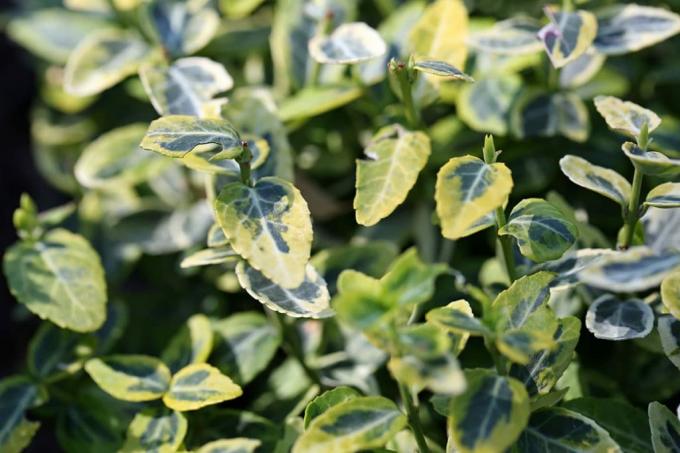
- Origin: China
- Location: partially shaded to shady, nutrient-rich, well-drained soil
- Height: 20 cm, can climb up to 5 m
- pH value: alkaline to slightly acidic
- Properties: creeps or climbs, forms adhesive roots, hardy
- Flowering period: June and July, white
- Care: water if the location is too sunny, otherwise easy to care for
Types of L - S
Lily grape (Liriope muscari)
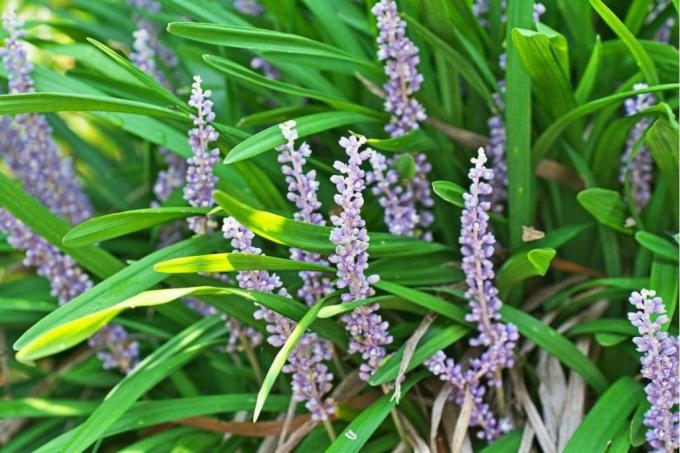
- Origin: Asia
- Location: semi-shady to shady, warm, protected, slightly moist, nutrient-rich, well-drained, also gravelly substrate
- Height: 80 to 100 cm
- pH value: weakly acidic soils
- Properties: cushion-forming, grows from a tuber, evergreen, frost-resistant, multiplies via runners
- Flowering period: August to October, purple or blue
- Care: water when it is dry, cut back old leaves in spring
Lower shamberry (Gaultheria procumbens), red partridge berry
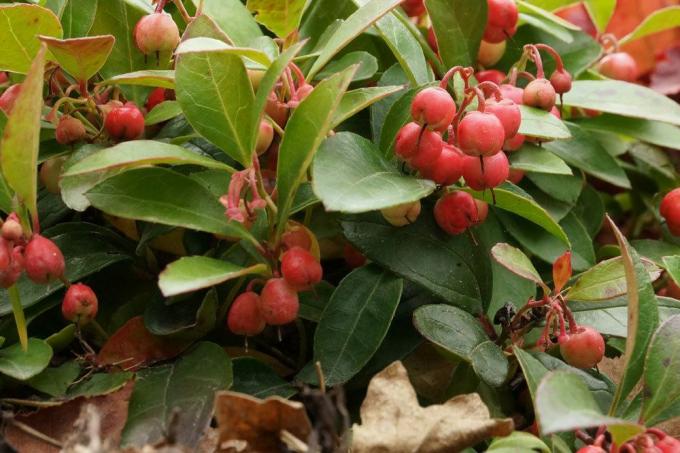
- Origin: North America
- Location: partially to shady, moist, nutrient-poor soil
- Height: 15 to 20 cm
- pH value: acidic
- Characteristics: runners, evergreen, red berries in winter, grated leaves are fragrant
- Flowering period: July and August, pink and white
- Care: fertilize in spring and summer, water in dry conditions, avoid waterlogging, compatible with pruning
Porcelain flowers (Saxifraga x urbium)
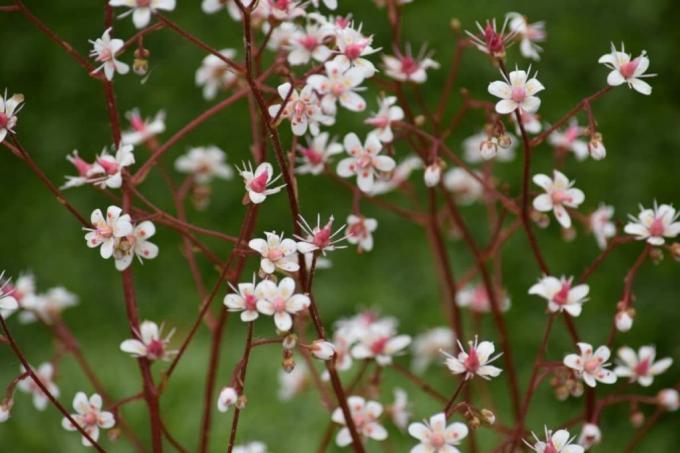
- Origin: Southern Europe
- Location: partially shaded to shady, moist, nutrient-poor, well-drained soil
- Height: 10 to 30 cm
- pH value: weakly alkaline to acidic
- Characteristics: forming rosettes, evergreen, filigree flower panicles
- Blossom: May and June, star blossoms in white, pink and red
- Maintenance: no maintenance necessary
Cowberry (Vaccinium vitis-idaea)

- Origin: native
- Location: sunny to shady, loose, moist, nutrient-rich substrate
- Height: 20 to 40 cm
- pH value: acidic
- Characteristics: small shrub, branches out, deciduous
- Blossom: May to June and July to August, whitish to pink bell-shaped blossoms, red, very acidic berries
- Care: water in dry conditions, can be fertilized on poor soils
Note: If the cranberries are also to bear a lot of fruit as ground cover, a sunnier place and acidic soils are better. In the pure shade they are suitable as green ground cover, but do not bear so well. The same goes for wild blueberries.
Foam flowers (Tiarella cordifolia)

- Origin: North America
- Location: partial shade to shade, moderately moist and nutrient-rich, well-drained soil
- Growth height: 10 to 20 cm
- pH value: neutral to slightly acidic
- Characteristics: carpet-forming, runners above ground, creeping, autumn color
- Flowering period: April to May, pink and white
- Care: fertilize spring and autumn, keep moist, especially in dry conditions
Types from T - Z
Carpet St. John's wort (Hypericum calycinum), large-flowered or low-blooded St. John's wort
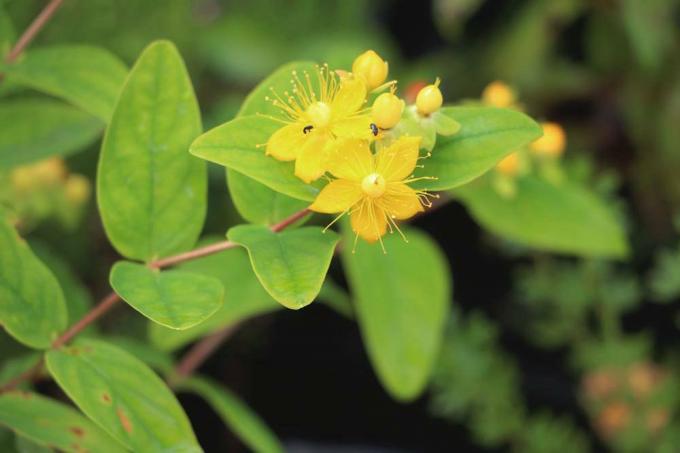
- Origin: Southeast Europe to Asia Minor
- Location: partially shaded to shady, not too moist, drought tolerant, well-drained soil
- Height: 20 to 50 cm
- pH value: weakly alkaline to acidic
- Properties: cushion-forming, propagation via runners
- Flowers: July to September, yellow, large flowers
- Care: easy to care for and robust, fertilize with compost now and then, cut compatible, winter protection prevents the shoots from freezing back
Wild blueberry (Vaccinium myrtillus), blueberry
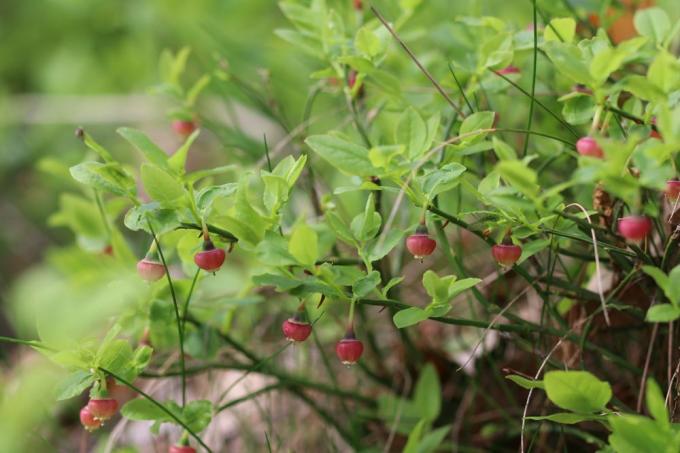
- Origin: native
- Location: sunny to shady, moist, well-drained, sandy soil with humus content
- Height: 20 to 50 cm
- pH value: acidic
- Characteristics: small shrub, forms runners, densely branched growth, reddish autumn color
- Flowers: May and June, white flowers, purple berries, edible
- Care: keep moist, fertilize from time to time, acidify the soil if necessary, thin out in spring
Forest marbel (Luzula sylvatica), forest grove

- Origin: native
- Location: partially to shady, moist, nutrient-poor soil
- Height: 20 to 60 cm
- pH value: neutral to acidic
- Characteristics: green foliage with white edges, elongated leaves, forming clumps, propagation via runners
- Flowers: April to June, green or brown, panicle
- Care: mulch with leaves in autumn, water in dry conditions
Dwarf Funkia (Hosta minor)
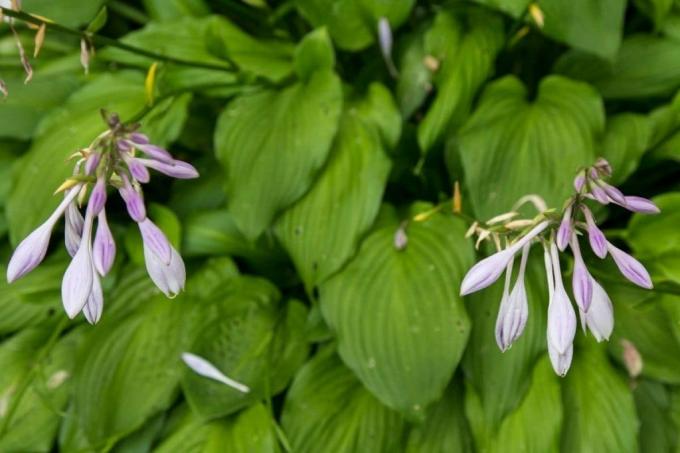
- Origin: Asia
- Location: partially shaded to shady, moist, cool, sandy to loamy
- Height: 10 cm
- pH value: neutral to acidic
- Properties: green-white leaves, forms rhizomes, multiplies by division, forms clumps
- Flowering period: July and August, purple panicles
- Care: keep moist and fertilize in spring
frequently asked Questions
Two factors can influence the winter hardiness of plants. Permanent wetness or frost dryness. In the shade, the latter isn't such a big problem. If they are exposed to sun or wind, on the other hand, they have to be watered every now and then, even in winter.
Home remedies such as coffee grounds, but also bark mulch from conifers, are suitable for this. There are also special earths to buy in stores, for example rhododendron earth.
Most of the ground cover in the shade do not need pruning. Sometimes it makes sense to remove faded or dead shoots and leaves after winter.
The more plants are planted, the faster the area is densely overgrown. With smaller ground cover, this can be 25 plants per square meter.

